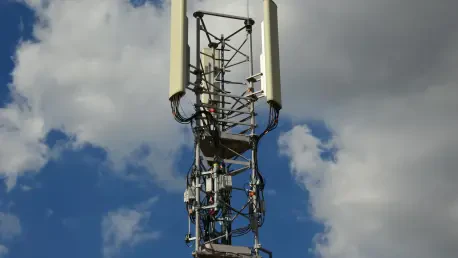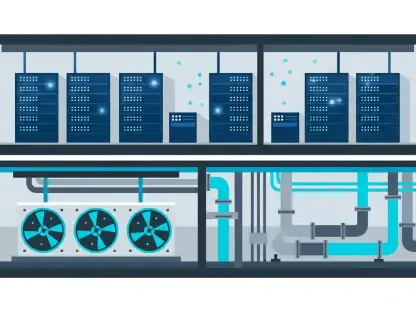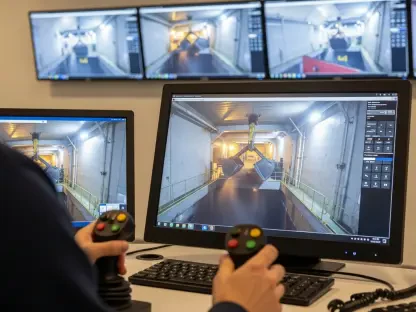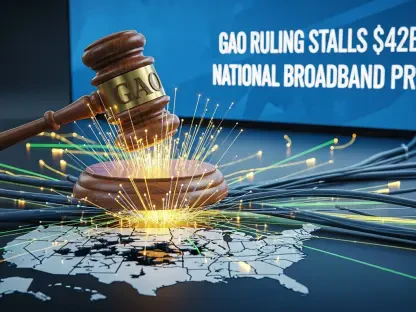In the ever-evolving world of telecommunications, new technologies are continuously reshaping the landscape, and industry pioneers like Vladislav Zaimov lead the charge. With a wealth of experience in enterprise telecommunications and network risk management, Zaimov offers valuable insights into the latest advancements and challenges in the field. In this interview, we delve into the launch of Zain’s 5G Advanced service, the strategic shifts within major telecom companies, and the innovations being introduced to enhance connectivity.
Can you tell us more about Zain’s commercial launch of 5G Advanced service in Kuwait? What are its key features?
Zain’s launch of 5G Advanced service in Kuwait represents a significant leap forward in telecommunications. They’re focusing on boosting speed and capacity to meet the growing demand for high-definition streaming, gaming, and data-heavy applications. This move is essential for addressing the digital needs of modern consumers, who expect seamless connectivity and lag-free experiences. The key features include enhanced bandwidth, reduced latency, and robust network stability, transforming how users interact with digital content.
How does Zain plan to convince its customers to adopt the 5G Advanced service? Could you explain the free trial offer for postpaid users?
To encourage customer adoption, Zain is offering postpaid users a free 30-day trial of the 5G Advanced service. This approach aims to alleviate any hesitations consumers might have about transitioning to this enhanced network. The trial allows users to experience the benefits firsthand, showcasing the significant improvements in speed and efficiency. By allowing customers to test the service risk-free, Zain is effectively illustrating its value proposition, which can lead to increased subscriptions as users come to rely on faster and more reliable connectivity.
What challenges did Zain face when initially launching 5G in the region in 2019? How have these experiences shaped the current launch of 5G Advanced?
Launching 5G in 2019 was a bold step for Zain, and it came with its set of challenges, including infrastructure development and consumer education. These initial hurdles provided essential insights into network deployment and consumer behavior, influencing their approach to the 5G Advanced launch. By learning from past experiences, Zain has honed its strategies to address previous limitations, ensuring smoother implementation and greater customer satisfaction this time around. The overcoming of these obstacles has paved the way for a more robust roll-out of 5G Advanced.
With Eng. Saad bin Abdulrahman AlSadhan being confirmed as CEO of Zain KSA, what new strategies or changes can we expect from Zain’s Saudi unit?
Eng. Saad bin Abdulrahman AlSadhan’s appointment is likely to usher in fresh strategies focused on strengthening Zain’s position in the Saudi market. We might see an increased emphasis on digital transformation, customer-centric innovations, and expansion of network capabilities to support rapid technological advances. Eng. AlSadhan’s experience within Zain could also lead to more aligned internal processes and a renewed focus on market leadership in the region.
Why is open RAN being met with skepticism by some industry stakeholders, and how does Digital Catapult’s new facility aim to address these concerns?
Open RAN is sometimes viewed skeptically due to concerns about interoperability and performance consistency. However, these challenges are precisely what Digital Catapult’s facility seeks to tackle. By establishing a center recognized by the O-RAN Alliance, they aim to standardize open RAN implementations, offering certification and conformance testing. This serves to reassure stakeholders by validating open RAN technologies’ reliability and effectiveness, promoting wider acceptance and deployment.
How significant is the recognition from the O-RAN Alliance for Digital Catapult, and what impact might this have on the UK and EMEA regions?
Being recognized by the O-RAN Alliance is a major milestone for Digital Catapult. It elevates the UK as a leader in open RAN innovation, encouraging local developments and attracting international collaborations. This recognition may spur investment and innovation in telecommunications infrastructure, not only in the UK but across the EMEA regions, fostering a more competitive and diverse industry landscape supportive of new technologies.
Considering Telia’s divestment of its TV and media business, what factors motivated this decision, and how does it align with Telia’s focus on connectivity in the Nordic and Baltic regions?
Telia’s divestment is part of a strategic pivot towards fortifying its core telecommunications business. By offloading non-core assets, Telia refocuses on enhancing connectivity services, particularly in the Nordic and Baltic regions where it seeks to consolidate its market leadership. This strategic realignment allows Telia to concentrate resources and investment on expanding and improving its connectivity offerings, ensuring that it remains competitive in a rapidly changing digital landscape.
Could you elaborate on the ongoing partnership between Telia and Schibsted Media, especially the inclusion of TV4 and MTV’s content in Telia’s offerings?
The partnership between Telia and Schibsted Media is a symbiotic relationship that leverages each company’s strengths. By including TV4 and MTV’s content in its offerings, Telia maintains a compelling content portfolio despite divesting its media business, providing value to consumers. This deal signifies a commitment to delivering diverse content choices while focusing on advancing connectivity solutions and meeting customer demands in its core markets.
How does EE’s “Stream Mode” WiFi variant work, and what specific improvements does it bring to households?
EE’s “Stream Mode” optimizes WiFi usage by prioritizing streaming services such as Amazon Prime Video. This capability brings marked improvements for households with multiple users by balancing bandwidth distribution, reducing buffering times, and enhancing overall streaming quality. It leverages smart technology to assess network demands and adjusts dynamically to ensure that essential streaming content receives the necessary bandwidth, providing a superior user experience.
What motivated EE to develop the WiFi Enhancer service, which includes Stream Mode, Game Mode, and Work Mode?
The development of the WiFi Enhancer service by EE was driven by the need to adapt to evolving user behaviors and the growing demands of modern digital lifestyles. Recognizing that households have varied bandwidth needs—whether for work, gaming, or entertainment—EE introduced customizable modes. These modes, including Stream, Game, and Work, ensure optimal network performance tailored to specific activities, thereby enhancing customer satisfaction and retention.
How do the Business Flex+ packages from Proximus cater to small businesses, and what are the differences between the various offerings?
Proximus’s Business Flex+ packages are designed to address the diverse needs of small businesses by offering scalable solutions. Packages vary from basic options suitable for small operations with limited data needs to high-capacity plans for data-intensive businesses like creative agencies. The flexibility of these packages allows small businesses to choose services that match their size, data requirements, and growth trajectories, ensuring they receive cost-effective and efficient connectivity.
Given your varied experiences, how have your roles and expertise evolved over the years, and what drew you back into online journalism after your stint in hospitality?
My journey through various roles has been driven by a passion for storytelling and a curiosity about technological advancements. Transitioning from hospitality to journalism allowed me to combine my narrative skills with my telecommunications knowledge, addressing a broader audience eager for insights into an ever-changing industry. The shift back to journalism offered a platform to delve deeper into topics I’m passionate about, sharing crucial information and perspectives with readers.
What unique challenges did you face while managing a hotel in Exmoor, and have any of those experiences influenced your current work in journalism?
Managing a hotel in Exmoor was a unique venture that taught me resilience, multitasking, and customer service—all transferable skills to journalism. Hospitality is a fast-paced environment where problem-solving is key, which has equipped me to handle the dynamic demands of journalism. This experience has influenced my ability to connect with readers, prioritize engaging content, and maintain composure under pressure as I navigate the complexities of reporting on telecommunications advancements.
Do you have any advice for our readers?
Stay curious and adaptable. The telecommunications landscape is constantly evolving, and being open to learning about new technologies and trends is crucial. Engage with different perspectives and seek out opportunities to enhance your understanding. Whether you’re in the industry or simply a consumer, being informed empowers you to make better decisions and stay ahead in a digitally driven world.









